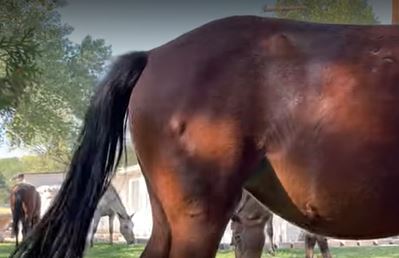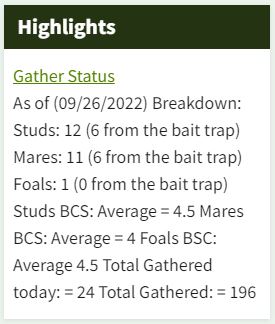The incident began on September 10. Gather stats through September 26:
- Target: Horses
- Type: Planned
- Method: Helicopter
- Category: Cruel and costly (advocates have a better way)
- Captured: 735, up from 710 on Day 15
- Average daily take: 43.2
- Capture goal: 1,076
- Removal goal: 1,036
- Returned: None
- Deaths: 22, up from 21 on Day 15
- Shipped: 688, up from 654 on Day 15
The figures above are based on the daily reports, not the totals posted by the BLM.
Helicopters did not fly on Day 16. The trap may have been moved to a new location.
A stallion was was put down on Day 17 due to a missing eye. He survived the chase and would be alive today if there was no roundup.
The death rate is 3.0%.
The capture total includes 269 stallions, 346 mares and 120 foals.
Youngsters represented 16.3% of the animals gathered.
Of the adults, 43.7% were male and 56.3% were female.
The herd can’t be growing at a rate of 20% per year with a birth rate of 16% per year.
The observed percentages of males and females are outside the range of variation attributable to a simple random process centered at 50% males / 50% females.
Body condition scores were not provided.
The location of the trap was not disclosed.
The HMAs and surrounding lands are subject to permitted grazing.

Day 17 ended with 25 unaccounted-for animals.
Mares treated with fertility control may be returned to the area at a later date.
The capture and removal goals at the gather page have not changed despite new targets in the latest schedule.
Other statistics:
- Horses allowed by plan (AML): 952
- Forage assigned to horses: 11,424 AUMs per year
- Pre-gather population: 1,593
- Forage liberated to date: 8,820 AUMs per year
- Water liberated to date: 7,350 gallons per day
- Forage assigned to livestock: Unknown
- Horses displaced from Complex by permitted grazing: Unknown
- True AML: Unknown
- Stocking rate at new AML: Unknown
- Horses displaced from Complex by drilling and mining: Ask the advocates
The pre-gather population exceeded the AML but not necessarily the number of horses the land can support.
RELATED: Calico Roundup, Day 15.












